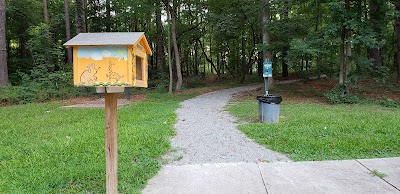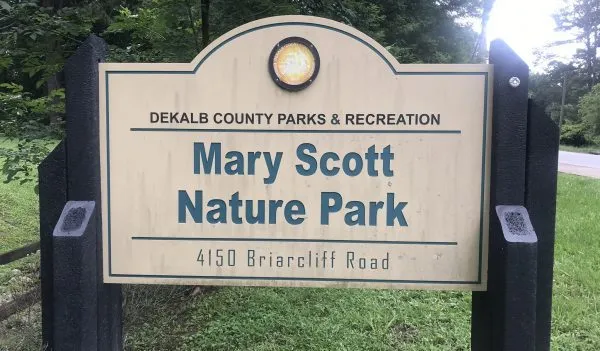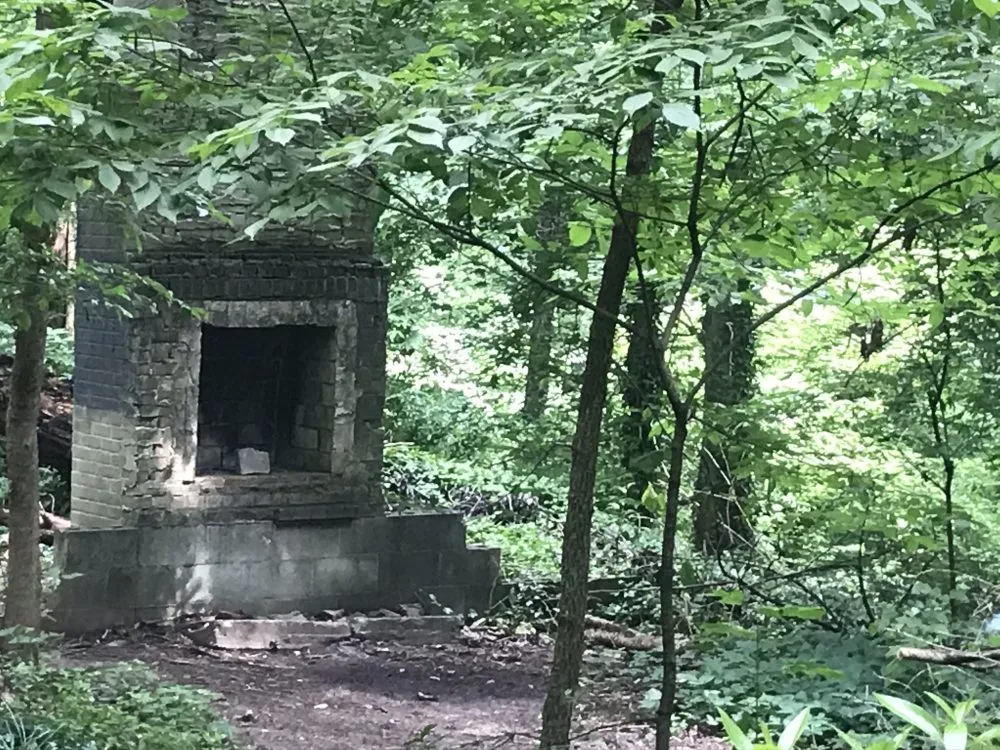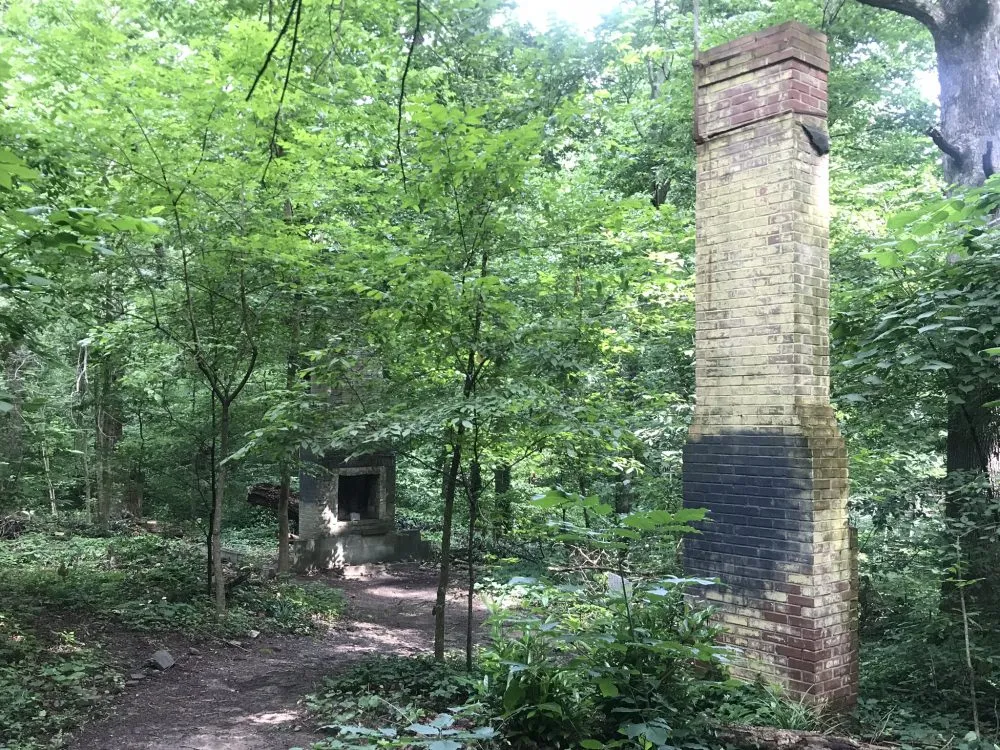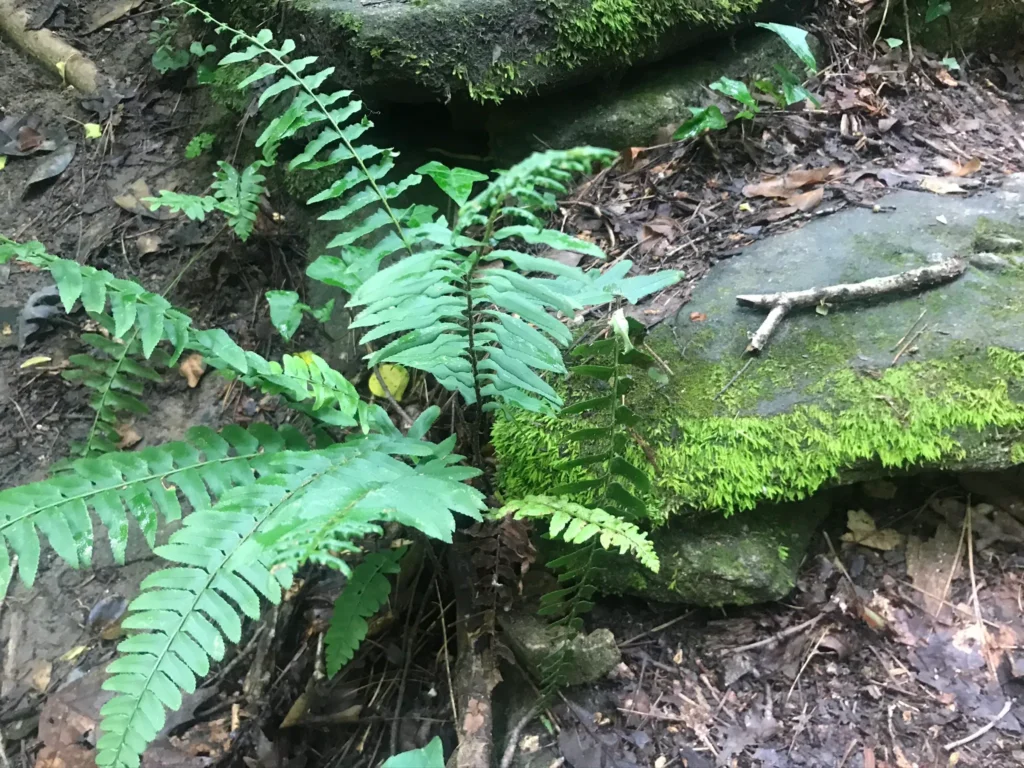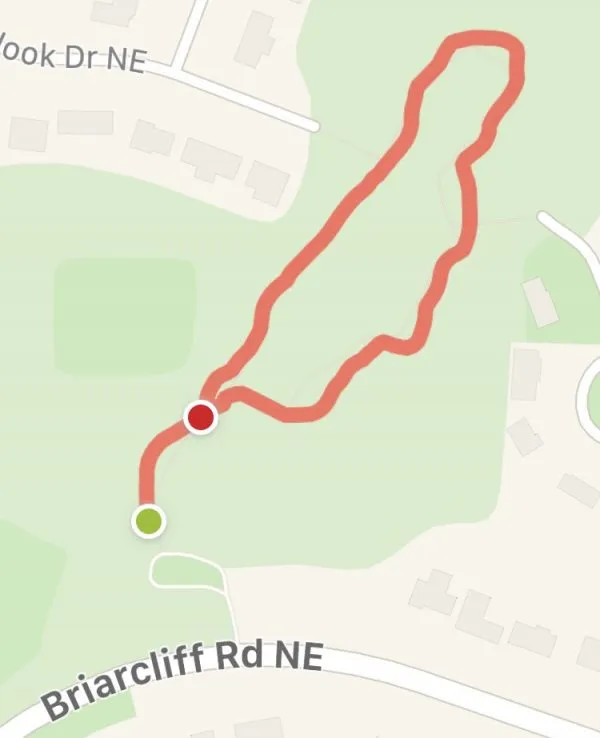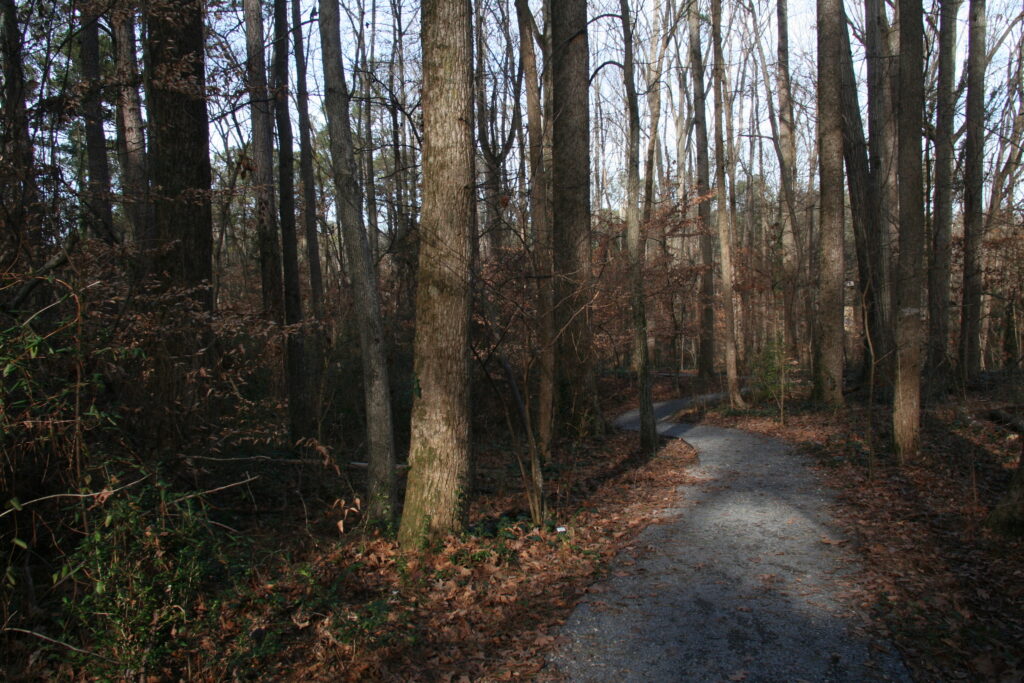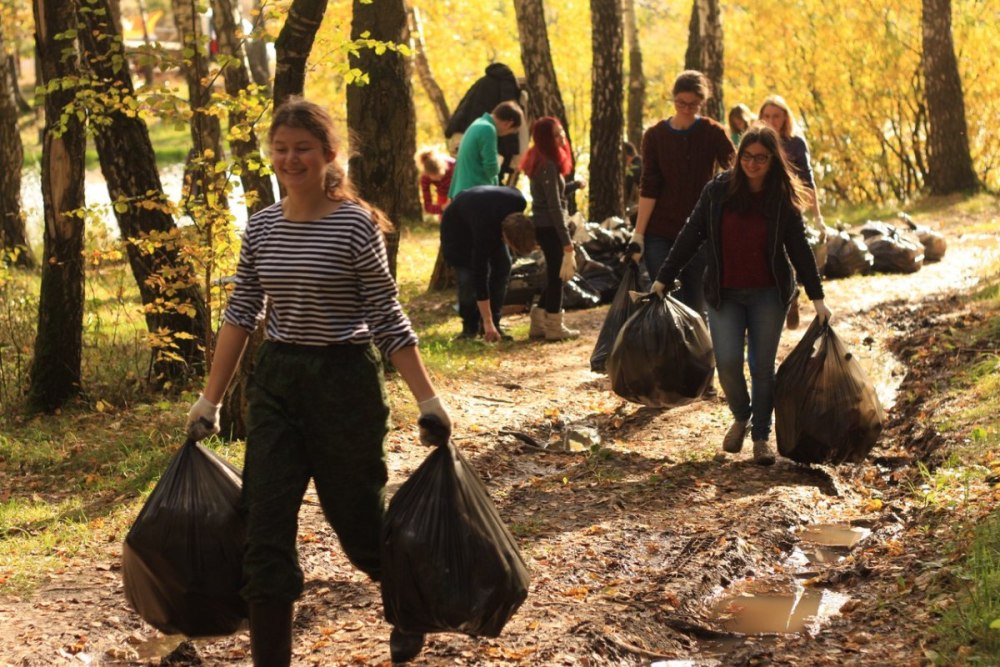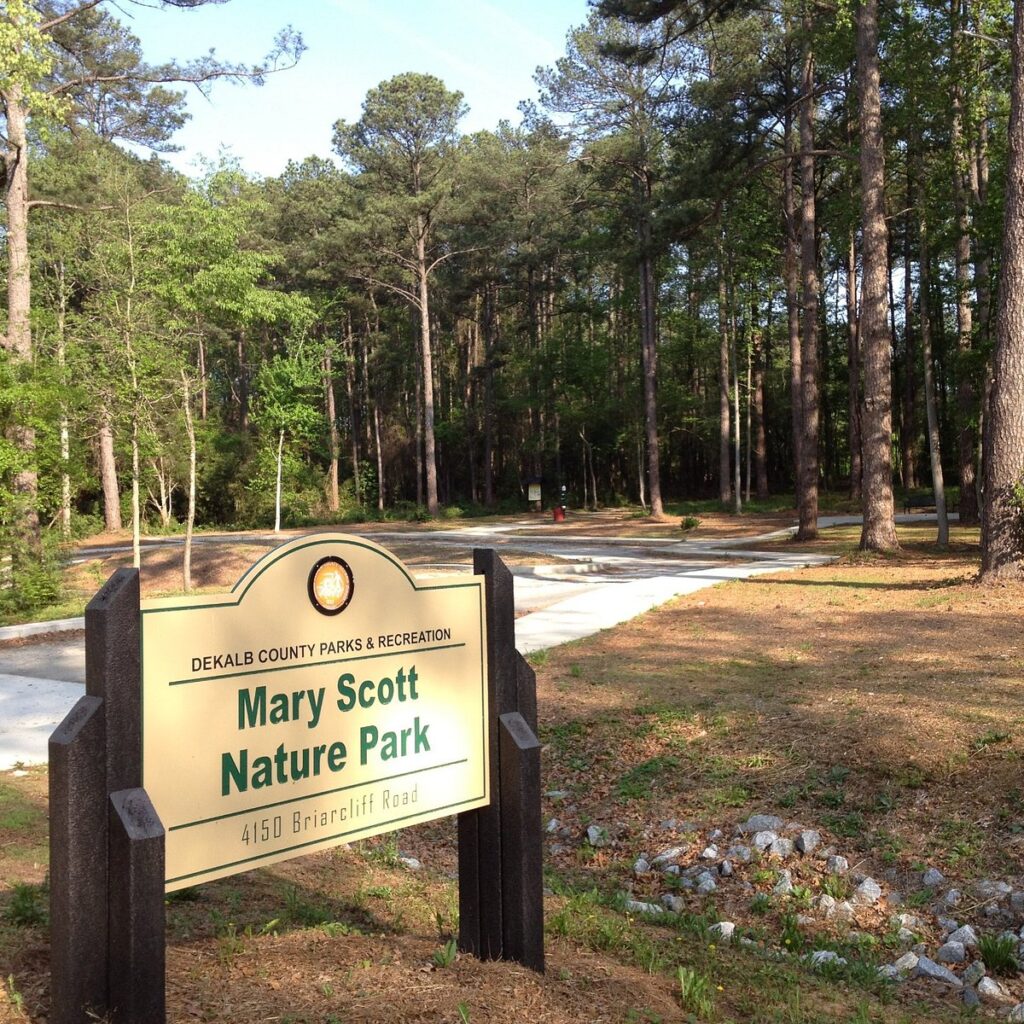Mary Scott Nature Park is a Certified Wildlife Sanctuary by Georgia Audubon. Georgia Audubon’s Wildlife Sanctuary Program recognizes and encourages people enhance their land for birds and other wildlife. Through planting native plants, removing or controlling non-native, invasive species, and providing food, water, and shelter, property owners can provide critical wildlife habitat and create a safe-haven for wildlife and people.
Georgia Audubon’s goal is to create a network of certified wildlife sanctuaries across Georgia to counter the loss and degradation of wildlife habitat. To date, Georgia Audubon has certified more than 600 properties

A History
Mary Scott Nature Park is ten-plus acres of inside-the-perimeter greenspace, located at 4150 Briarcliff Road. It was purchased by DeKalb County Greenspace in 2003, when it was on the market after the death of the last person to live on the property, Mary Armstrong. The sale by the family contained a requirement to honor Mary’s long-time friend Scott in the naming of the park. In the course of its development it was first referred to as the Armstrong property, then Mary and Scott Park, then Mary Scott Nature Preserve (as requested by the neighborhood), then via official signage as Mary Scott Nature Park. The $2.1 million purchase price was funded by DeKalb County bonds along with grants from the Blank Foundation and Georgia Greenspace, with the stipulation that no more than 15% of the area be “improved” with trails, parking lots, playgrounds and other amenities.
A small tributary of the North Fork Peachtree Creek (NFPC) flows through the park, paralleling Briarcliff but at the rear of the property. The creek water is non-potable, so please don’t drink, and don’t let pets drink. That tributary merges with another downstream into Lake Flair, which flows directly into NFPC. Old county trail development maps envision a walking trail along NFPC, though this would have run through a wetlands area near Mercer University.
At the back of the property, near the tributary, stand two chimneys from Mary Armstrong’s old homesite which had remained unoccupied for several decades and eventually collapsed.
Ms. Armstrong was a gardener and there are remnants of stone walls and plantings of traditional non-native plants. In the front third of the property, the land shows terracing, suggesting it might have once been farmed. A stone stairway leads down to a sitting area near the creek.
Mary Scott Nature Park is a mid-slope, early successional forest with a number of interesting species including Pagoda Dogwood (Cornus alternifolia). Pockets of trillium, bloodroot and wild ginger are intermixed with Christmas and other ferns.
Additional Links:
- Waterwatch for North Peachtree Creek (provides data on creek water quality)
- North Briarcliff Civic Association
- Park Pride (Donation site)


